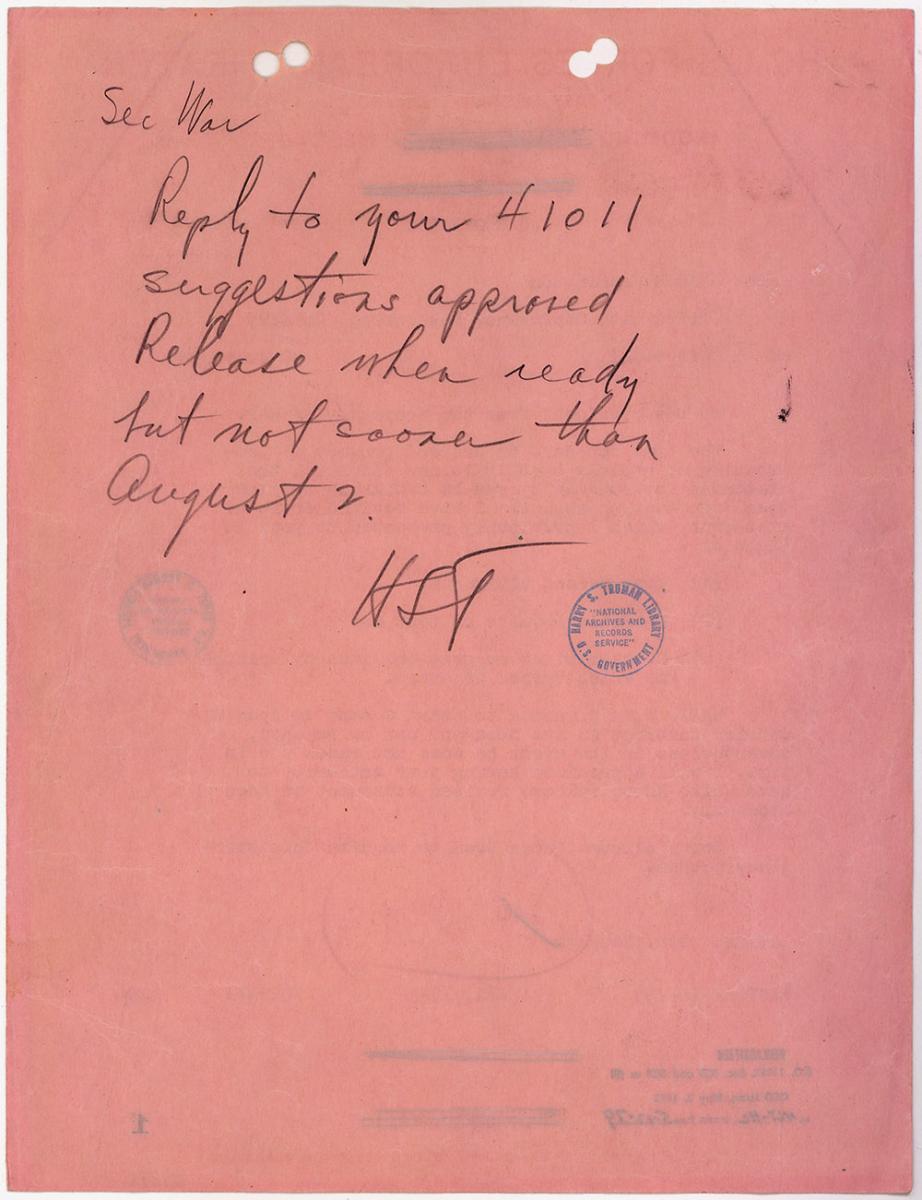
'Release When Ready'
Summer 2005, Vol. 37, No. 2 | Pieces of History
For two weeks in late July 1945, the leaders of the alliance that had crushed the Third Reich met in Potsdam, a suburb of Adolf Hitler’s ruined capital of Berlin, to discuss the future of the post–World War II world.
Among the many issues weighing on the mind of one participant, President Harry S. Truman, was the preparation of a momentous public statement. In it, the U.S. Government would reveal one of the most important and closely guarded secrets in human history: the creation of the atomic bomb.
Various officials had been laboring on the text of the statement for weeks. It would be released at the White House and would announce that the world’s first atomic bomb had been dropped on a Japanese target. It would also describe the vast and secret program—spanning three years and costing some $2 billion—that had produced this terrible new weapon.
On July 30, Secretary of War Henry Stimson, back in Washington, sent the President a telegram seeking his approval of a revised draft of the statement.
He suggested minor changes that would take into account both the successful test of the bomb in New Mexico on July 16 and the Allied ultimatum on July 26 demanding unconditional surrender of Japan.
Stimson informed Truman that preparation of the bomb was progressing so rapidly that the statement should be ready for release no later than August 1.
Truman turned the message over and scrawled on the back the reply that was to be sent by telegram to Stimson: “Sec. War Reply to your 41011 [the number of the telegram] suggestions approved Release when ready but not sooner than August 2.”
This “release when ready” note is sometimes regarded as Truman’s written approval to use the atomic bomb against Japan. Actually, it only authorized the release of the statement announcing the use of the bomb. Truman’s diary indicates he had decided by July 25 to use the bomb if Japan failed to surrender in response to the Allied ultimatum of July 26. Military preparations to drop the bomb on a Japanese target were already under way. Nonetheless, Truman’s handwritten note to Stimson amounted to an implied final approval for its use.
Truman left Germany on August 2, boarding the USS Augusta for the trip home. During the trip, on August 6, an atomic bomb was dropped on Hiroshima.
In Washington, the White House press corps received the astonishing announcement Truman had approved: “Sixteen hours ago an American airplane dropped one bomb on Hiroshima, an important Japanese Army base. . . . It is an atomic bomb. It is a harnessing of the basic power of the universe.”
A second atomic bomb was dropped August 9 on Nagasaki, and the Japanese surrendered August 16. World War II officially ended on September 2, when the Japanese signed the surrender document aboard the USS Missouri in Tokyo Bay.

